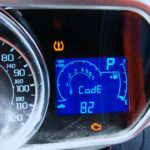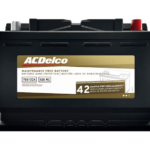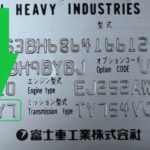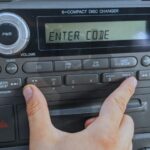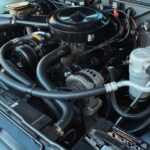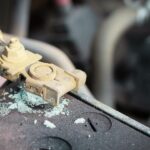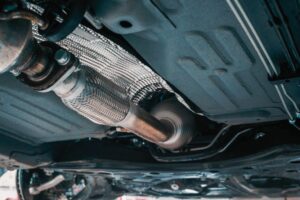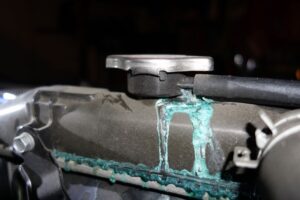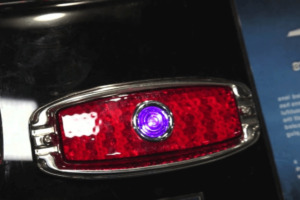If you or your mechanic see the P0420 code appear on a code reader when diagnosing engine issues, what does this mean? What does P0420 mean, and how to fix this issue?
When you see code P0420, it usually means there is a problem with the car’s catalytic converter. The technical definition of the OBD-II P0420 code is “Catalyst System Efficiency Below Threshold (Bank 1)”. This means the catalytic converter of the engine is not functioning at its maximum efficiency.
The P0420 code does not pose any problem to you as the driver. However, it can result in drivability issues. These issues can include poor acceleration or reduced power. If not addressed timely, it could result in more serious damage to other parts of the car.
Read on to learn more about the P0420 code, what it means, its symptoms, causes, and how to fix this issue.
P0420 Code – What It Means
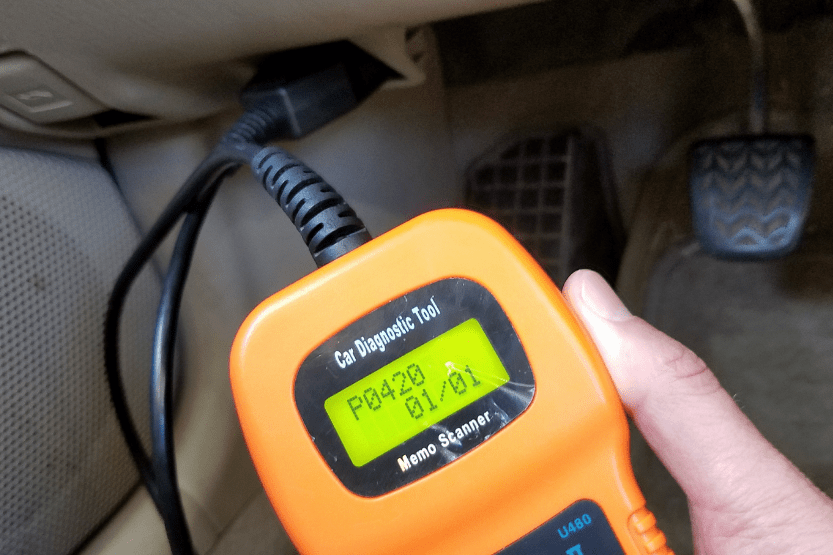
The engine code P0420 is one of the diagnostic codes (DTCs) of a car’s genetic powertrain. It is generic since it applies to all types and models of vehicles from 1996 onwards. But repair procedures between different engines are slightly different depending on the car make and model.
When you see P0420 on a code reader, it indicates that the catalytic converter is not functioning properly. The catalytic converter aims to break down harmful pollutants that form during the engine’s combustion cycle. It converts these toxic byproducts into less dangerous gases.
Catalytic Converter Malfunctioning
A catalytic converter has two oxygen sensors. One sensor is located in front or upstream of the converter, and the other oxygen sensor is located at the rear or downstream. If code P0420 shows up on an OBD code reader, it means the engine’s harmful gasses production has increased.
That means the operational efficiency of the catalytic converter is below its threshold. The two oxygen sensors have measured its efficiency and deemed that it is low. That is why you see the P0420 code. You should check the catalytic converter if it needs replacement.
The upstream oxygen sensor readings should vary ideally as the engine is operating in a closed-loop mode. In contrast, the readings on the downstream should always be constant.
Inside the catalytic converter are several catalysts such as rhodium, palladium, and platinum. These catalysts convert the toxic gases emitted by the engine into non-harmful states before they are released into the environment. Many car owners have reported getting P0420 codes in their cars made by the following automakers; for example:
- Toyota
- Ford
- Nissan
- Chevy
- Honda Accord
Other Possible Meanings of the P0420 code
It is important to know that the P0420 code doesn’t necessarily mean that you have a bad catalytic converter. What this code is simply saying is either:
- The catalytic converter is functioning below the threshold, or
- It is functioning below efficiency.
It may be that your car needs a new catalytic converter. However, to determine if your car really needs it, you will need a car technician or mechanic to properly diagnose your car’s engine.
Simply reading the P0420 code is not performing the required diagnostics. Only by having your car undergo the required engine diagnostics can you determine if you need to replace your engine’s catalytic converter.
How Serious Is Code P0420?
When you see engine code P0420, don’t worry too much because your engine’s danger is low. In most cases, this issue will not develop into more serious problems in the engine.
However, the worst-case scenario is that there’s a problem with your catalytic converter. These broken parts may block the exhaust pipe. But that is very unlikely to happen. You should fix it immediately because the engine’s toxic substances are very harmful to the environment.
An inefficient catalytic converter will also cause poor engine performance. You may experience poor acceleration and reduced engine power. You should address this problem immediately, or it may lead to more serious and more expensive damage to your car.
Symptoms of Failing Catalytic Converter
The primary sign indicating a problem with the catalytic converter is when the Check Engine Light lights up. You may not even notice any drivability issues.
Other than this, watch out for the following symptoms if you get this OBD code P0420 while driving your car:

- The increased fuel consumption or reduced fuel economy
- The smell of sulfur or rotten egg
- Reduced engine power
- Misfires
- Incorrect fuel to air ratio, either rich fuel mixture or lean fuel mixture
- Failed emission test
- Rough idling and stalling – if the catalytic converter has a clog with broken or loose catalysts inside.
Causes of Code P0420
There are many causes why the engine triggers the P0420 code. Surprisingly, it is not just a failing catalytic converter, although that is the most common cause.
Here are some of the other causes:
- A leak in the exhaust system
- Electric circuit problems like loose connections and broken wires
- Cylinder misfiring
- You use leaded fuel instead of unleaded fuel (not usual)
- Leaking fuel injector or elevated fuel pressure
- Computer issues (e.g., software needs to be updated)
- Contamination of engine oil and coolant
- Incorrect air to fuel ratio causing the converter to overheat
- The engine coolant temperature sensor is malfunctioning
- Spark timing is retarded
- Broken or leaking exhaust manifold/muffler/catalytic converter/exhaust pipe
How to Diagnose a Car with the P0420 Code
Here is the usual way car mechanics diagnose this code P0420 issue:
- Scan the car to determine if the P0420 code is the only code present. If you find that other codes are present, you should address them first.
- Inspect the exhaust system and look for leaks and broken parts. Look particularly at the exhaust manifold, exhaust pipes, gaskets, and the pre-catalytic converter. If you find any leaks, repair them or have a mechanic repair them. Then clear the code by completing several drive cycles to check if that was the correct fix.
- Start the engine and run it at normal operating temperature. Get a multimeter and check the voltage reading of the oxygen sensor downstream. You need to see that the voltage is steady. If the catalytic converter is operating properly, the voltage reading should be about 0.45 volts.
However, if this downstream O2 gives a fluctuating reading between 0.1 volts and 0.9 volts, the catalyst may be worn out, and the catalytic converter needs a replacement.
Additional Tips for Diagnosing OBD Code P0420
- It is good to read the exhaust temperature before and right after the catalytic converter’s point is installed. Use an infrared temperature gun to measure the temperatures in these two sections. They should read 100 degrees Fahrenheit and even hotter once the engine has already warmed up.
- Don’t replace the old catalytic converter right away before you have performed a thorough diagnosis of the P0420 code issue. This is the biggest and the most common mistake car owners commit. They assume that when they see this P0420 code on their engines, the culprit is the catalytic converter and the only solution to the problem is to replace it. You may be wasting your money if the catalytic converter is not the one at fault.
- If the catalytic converter really needs a replacement, you have to buy an OEM unit. You can get an original converter from the manufacturer in established dealers. Converters from their original manufacturers are more efficient and more durable. If you can’t find one, get a replacement part made of high-quality standards and materials. Don’t buy the cheap imitation converters. They don’t last long, and you may see the code appear again on your engine soon.
- Check the warranty of the catalytic converter of your car. Many car manufacturers provide longer warranties on the parts that are emission-related. If you have a newer model, chances are it may still have a warranty on this P0420 code issue. The majority of car makers offer a five-year warranty on these parts.
Below is a video that shows engine code P0420 and how to check the catalytic converter in the car if it’s working:
Nissan code P0420, P0420 code Chevy, P0420 code Toyota, Honda P0420: no matter the vehicle, if you see code P0420, it is likely an issue with the catalytic converter. To see how to fix a car that shows OBD P0420, see the below possible solutions.
How to Fix P0420 Code Issues
As you now can see, there are several reasons why your car engine triggers the engine code P0420. That means there is no ‘magic bullet’ that can easily solve the problem. You need to diagnose this code correctly to fix the real cause of the problem.
As it is, this code could be triggered by anything from a malfunctioning catalytic converter to a broken oxygen sensor or some other issues. There is no way out of correctly diagnosing the code.
It is also wise to consider that all vehicles are not the same. In troubleshooting and fixing diagnostic codes, you need to consult your car’s manufacturer’s repair instructions. That said, here are some repair tips that might fix code P0420 problems:
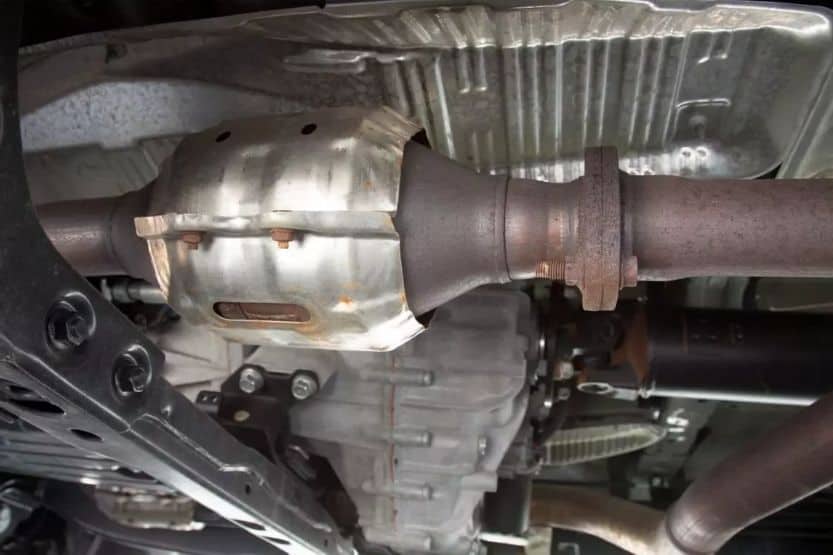
- Repair or replace the catalytic converter.
- Repair leaks in the muffler or replaces the muffler if it is totally damaged.
- Replace front or rear oxygen sensor (whichever is found faulty).
- Repair the exhaust pipe or replace it if it is totally broken.
- Replace engine coolant temperature sensor.
- Repair leaks in the exhaust manifold or replace it if it is completely damaged.
Approximate Cost of Repair
Since there are multiple reasons why your car gives you this P0420 code, there are no fixed repair costs your mechanic can give you. But since the most common cause is a failing catalytic converter, the main repair cost is the cost of its replacement plus the labor required to install it.
The typical cost of catalytic converters ranges from $500 to $2 400 for the item and $100 to $200 for replacing it. If you want to know the cost of fixing specific items other than the catalytic converter, their costs can be as follows:
- Exhaust leak repair – from $100 to $200 (if welding is required)
- Air/fuel sensor or oxygen sensor replacement – from $200 to $300
P0420 Code FAQs
Here are some P0420 questions and answers that may help you understand the topic even more:
Q: How can you clear a P0420 code?
A: It is possible to clear a P0420 code using a code reader or a scan tool. But this is only a temporary fix. If you don’t really get to the root cause of the problem, this code will return. The primary computer of your car always runs a system self-test so expect the code to come back.
If you don’t want to see this code appearing again, you have to diagnose the underlying problem and then fix the issue or have someone perform the necessary repairs. And then clear the code by using the code reader or a scan tool.
Q: Can you drive with code P0420?
A: If your car shows OBD code P0420, you can still drive. It will not cause any serious damage to your car for short distances. However, if you ignore the warning and drive your car for hundreds of miles, there is no telling what kind of damage you will inflict on your car. It is better to have this issue fixed as soon as you can.
Q: Can the P0420 code be triggered by a bad oxygen sensor?
A: A faulty O2 sensor can trigger this code. The catalyst inside the sensor uses the signal coming from the downstream O2 sensor to determine the converter’s efficiency. The converter uses the signal from the upstream sensor as a reference point. Therefore, failure of either the downstream or upstream oxygen sensor will trigger code P0420.
Conclusion: Code P0420
If the Check Engine Light illuminates and the P0420 code shows up, it signifies a problem with the catalytic converter. This code’s full technical term is OBD-II P0420, and its definition is “Catalyst System Efficiency Below Threshold (Bank1).
If you see this code in your car’s instrument cluster, the most common meaning is that the engine’s catalytic converter is not operating at its maximum efficiency.
Related reading:
How to Fix a Car Window That Won’t Stay Up
P0440 Code [Causes and How to Fix]
P0137 Code – What Does It Mean?
How Much Does It Cost to Fix an Exhaust Leak?

